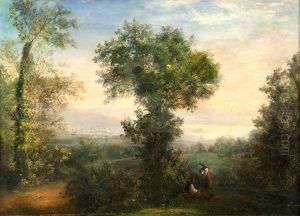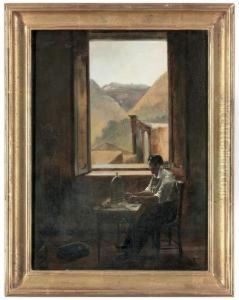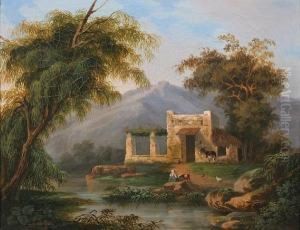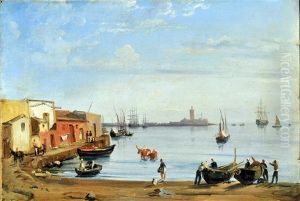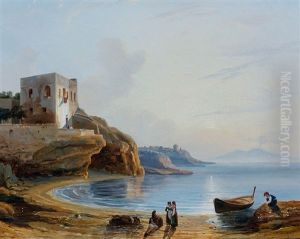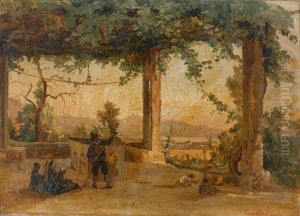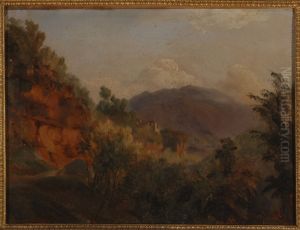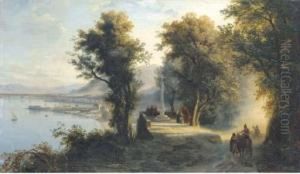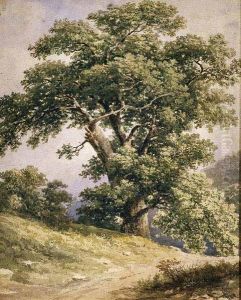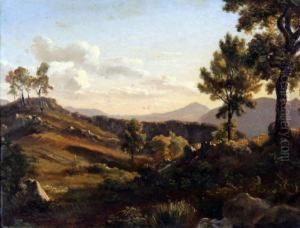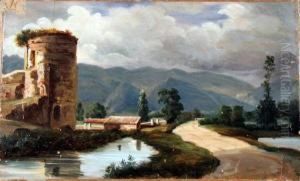Gabriele Smargiassi Paintings
Gabriele Smargiassi was an Italian painter, known for his landscape and architectural paintings, which were prominently featured in the Romantic movement of the 19th century. Born in Vasto, in the region of Abruzzo, Italy, in 1798, he began his artistic training at the Neapolitan School under the guidance of landscape painter Anton Sminck van Pitloo. Smargiassi's early work was influenced by the classical landscapes of Claude Lorrain, but he gradually developed his own style, which was characterized by a more atmospheric and emotive approach, capturing the mood and spirit of the Italian countryside and urban vistas.
During his career, Smargiassi became widely respected and was involved in the artistic circles of Naples, where he spent most of his life. His works were sought after by collectors and art patrons, contributing to the diffusion of the Italian Romantic landscape tradition. Smargiassi was also involved in the teaching of art; he was appointed as a professor at the Royal Institute of Fine Arts in Naples, where he influenced a generation of Neapolitan artists. His contributions to the Neapolitan School were significant, and he played a role in the transition of landscape painting from the 18th to the 19th century.
Smargiassi's landscapes often depict scenes from the Campania region, including views of the Bay of Naples, Mount Vesuvius, and the surrounding countryside. His work is noted for its poetic use of light and shadow, as well as its detailed representation of natural and architectural elements. He was able to convey the grandeur of nature and the serene beauty of rural and coastal scenes, which resonated with the Romantic era's emphasis on emotion and nature.
Throughout his life, Smargiassi exhibited his work in various venues, gaining recognition and accolades. His paintings can now be found in numerous art galleries and private collections. He continued to paint and teach until his death in Naples in 1882, leaving behind a legacy as one of the key figures of Italian Romantic landscape painting. His contributions to the arts have been remembered and celebrated, and his works continue to be studied and appreciated for their artistic merit and historical significance.
